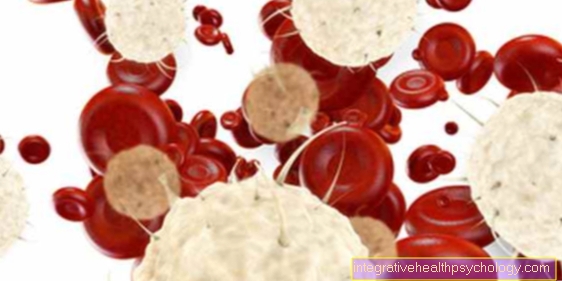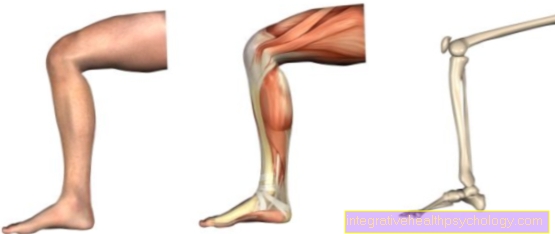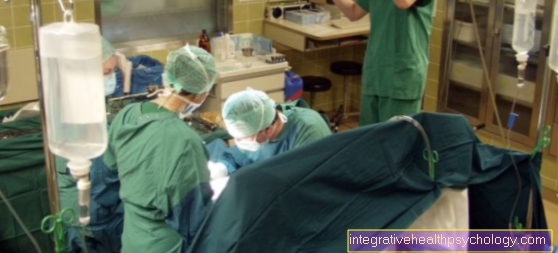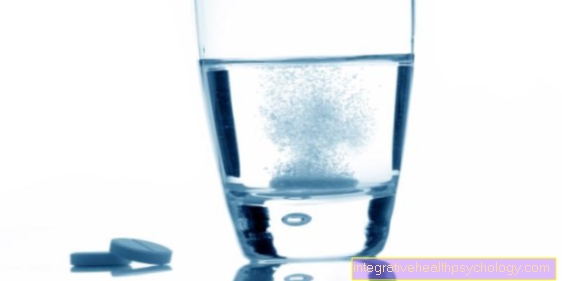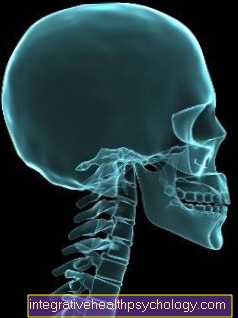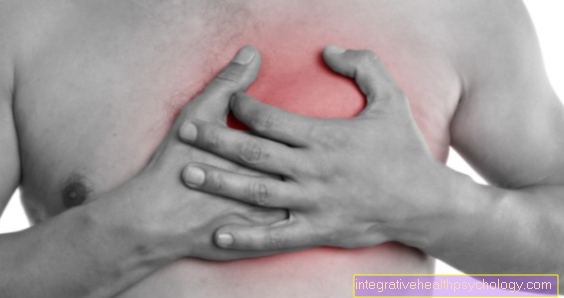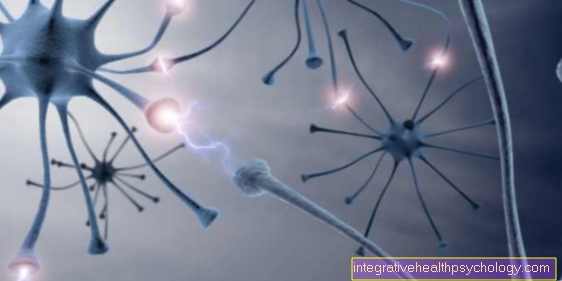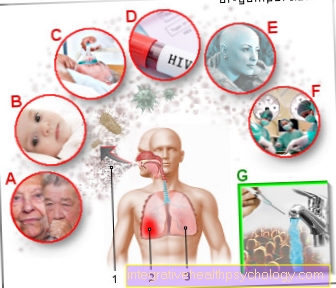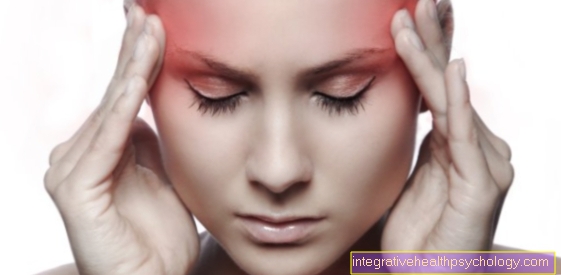Angiotensin 2
introduction
Angiotensin 2 is an endogenous hormone that belongs to the class of so-called Peptide hormones is counted. Peptide hormones (synonym: Proteohormones) are made up of the smallest individual components, the amino acids, and are water-soluble (hydrophilic / lipophobic).
Angiotensin 2 itself consists of a total of eight amino acids. Due to its water-soluble property, angiotensin 2 is not able to pass independently through the cell membrane and exercise its messenger function inside the cell.
The effect as a hormone can therefore only be developed after binding to a suitable surface receptor. As part of the renin-angiotensin-aldosterone system (RAAS for short), angiotensin 2 plays a crucial role in regulating the water balance and maintaining blood pressure.
Formation of angiotensin 2
Angiotensin 2 is formed and released in the organism not in arbitrary amounts. Rather, the tissue hormone angiotensin 2 is part of a specific activation cascade, the so-called Renin-Angiotensin-Aldosterone System.
In the course of this system, the kidney on one falling blood pressure or one decreased blood flow with the release of the enzyme Renin. Also a acute loss of table salt and waterwhat one Reduction in blood volume can be equated, triggers a renin release.
As an enzyme, renin is able to transform the into the Liver cells formed angiotensinogen to split off the precursor of angiotensin 2, namely angiotensin 1. The conversion of the hormone precursor to the active hormone then takes place with the help of the Angiotensin Converting Enzymes (short: ACE).
Effects of angiotensin 2
The one for the tissue hormone angiotensin 2 specific surface receptor (AT receptor) is found mainly on the outer side of the cell membrane of blood vessel, kidney and adrenal cells. Binding to the angiotensin 2 receptor of the blood vessels creates a signal chain in the Inside smooth muscle cells activated, which triggers their contraction.
This way the before dropped blood pressure by the influence of the Renin-Angiotensin-Aldosterone System increased again. In the kidney the activation of the specific angiotensin 2 receptor has a constriction (Narrowing) smallest kidney vessels result. Through this process can even with falling blood pressure a constant kidney function guaranteed.
In the Adrenal gland Angiotensin 2 has no direct influence on vascular or muscle cells. Rather, the tissue hormone develops its effect there by stimulating the release of two further messenger substances, Aldosterone and adrenaline. Also in the Pituitary gland (lat. Pituitary gland) after angiotensin 2 binds to its receptor, an increased release of another hormone is triggered.
In addition, it is assumed that the Sensation of thirst can be controlled by the release of angiotensin 2. In general, based on the functions of the tissue hormone angiotensin 2 described, a Blood pressure increasing effect be derived.
Breakdown of angiotensin 2
Angiotensin 2 can be in its actual form Not through the organism eliminated become. Rather, the tissue hormone must after it has developed its effect by special enzymes (Aminopeptidases) and split this way inactivated become.
In this context, it must be noted that the accumulated during the degradation process Intermediates partly also one Influence on that
- Vascular system
- Kidneys
- Adrenal glands and
- CNS (central nervous system)
can exercise.
Angiotensin 2 in pharmacology
The renin-angiotensin-aldosterone system in general and the tissue hormone angiotensin 2 in particular offer a suitable solution for drug manufacturers Point of attack for the treatment of many diseases.
All common medicines are usually used for Lowering blood pressure (Antihypertensive drugs) and to Relief of the heart manufactured and applied.
One differentiates roughly two types of drugs:
- ACE inhibitors (inhibit the formation of angiotensin 2)
- AT1 receptor antagonists (block specific receptor of the hormone and thus prevent an angiotensin 2 receptor interaction)
Side effects
The main side effects of ACE inhibitors and AT1 receptor antagonists include:
- chronic dry cough
- sharp drop in blood pressure
- a headache
- Fatigue and
- Circulatory problems
occur.

